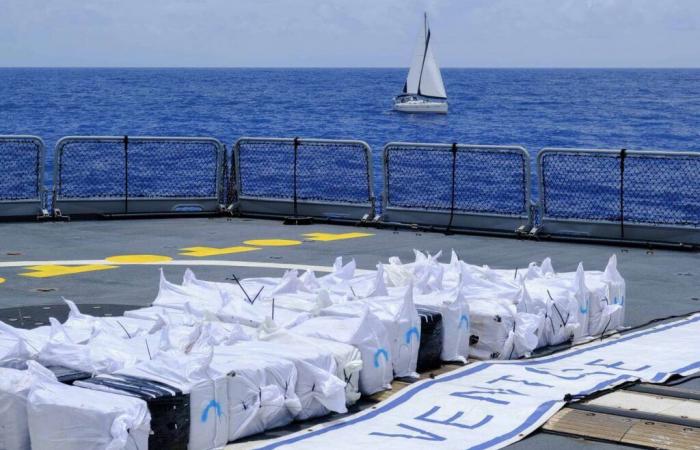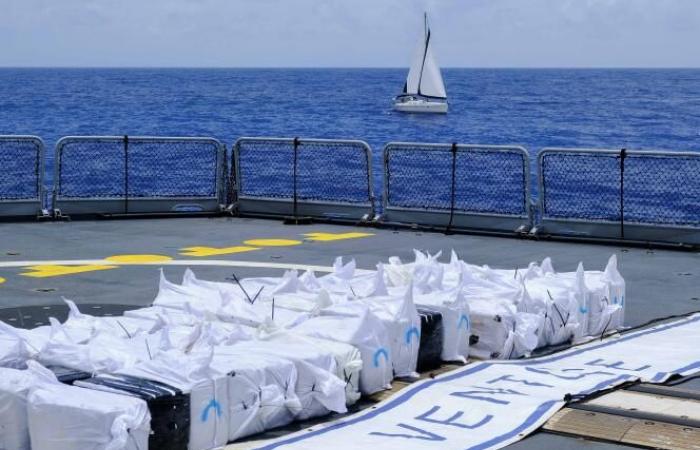In Martinique, Monday August 19, the frigate Ventose returns to the port of Fort-de-France. The warship of the Armed Forces in the Antilles (FAA) does not return alone: alongside it, a fishing vessel of about twenty meters, with faded white paint, flying the Brazilian flag. The massive trophy that constituted its cargo is displayed on the quay of Fort Saint-Louis, distributed in about 300 bales, arranged on about thirty pallets: 10.5 tons of cocaine.
Read also | Article reserved for our subscribers The Antilles on the front line in the face of exploding cocaine trafficking towards Europe
Add to your selections
This is, to the nearest half-ton, the total quantity seized by France in all the Antilles over the whole of 2023. In 2022, cocaine seizures made in these territories amounted to nearly 1.2 tonnes and seizures in commercial ports in mainland France from the Antilles reached 6.7 tonnes over the same period.
The nine passengers on the ship – six Brazilians, two Venezuelans and one Colombian – were handed over to the police of the Anti-Narcotics Office (Ofast), who will continue the investigations. A few days earlier, they were the ones who provided the information that triggered the interception mission, 1,200 kilometers off the coast of Martinique. To achieve this, their information had to circulate between several services and different countries. “It’s a lot of work of cross-referencing and exploiting information that ends up paying off.says the public prosecutor of Fort-de-France, Clarisse Taron. It is not just France that is affected by the importation of cocaine, all the ports of Western Europe are affected, so many countries work with us in this area of the Antilles.”
A common pot of information
In his report on “the threat status”revealed by The World In February 2024, Ofast pointed out that the Caribbean islands positioned closest to the South American production countries and located on historic routes of global maritime transport constituted one of the main transit areas for cocaine. The office specified that “the ports of Fort-de-France in Martinique and the complex [logistique et industriel] of Jarry in Guadeloupe thus represent privileged places of rebound”.
Read also | Article reserved for our subscribers Drug trafficking: X-ray of the threat in France
Add to your selections
To initiate this cooperation, OFAST shared its information with the Maritime Intelligence Analysis Operational Centre for Narcotics, or MAOC-N. Created in 2007 and funded by the European Commission, it centralises and shares intelligence produced by its members – France, Ireland, Italy, Spain, the Netherlands, Portugal, the United Kingdom and, since 2024, Germany and Belgium. In Lisbon, its headquarters brings together liaison officers from different countries, police and military, in order to facilitate exchanges between countries with different legislative frameworks and intelligence methods.
You have 55.46% of this article left to read. The rest is reserved for subscribers.





